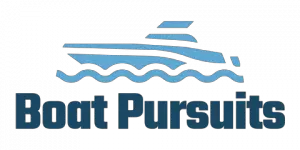Sailboats have been around for centuries, used by ancient civilizations to traverse oceans and explore new lands.
But what type of energy do sailboats use? To find out, let us embark on a journey exploring the many facets of sailboats from the different types of boats to the physics of sailing to the advantages and disadvantages of using wind energy.
By the end of this article, you’ll have a better understanding of how sailboats harness wind energy and the alternative forms of energy available for sailboats today.
So, let’s get started!
Table of Contents
Short Answer
A sailboat typically uses wind energy to propel the boat forward.
The sails capture the wind and use it to move the boat in the desired direction.
Additionally, the sailboat may also use auxiliary power in the form of an electric motor or gasoline engine to supplement the wind energy.
Finally, the energy provided by the crew’s rowing or paddling is also commonly used to move a sailboat.
History of Sailboats
Sailboats have a long and fascinating history, dating back to ancient times.
The earliest known sailboats were used by the Phoenicians in the Mediterranean Sea over 3,000 years ago.
These ancient vessels were powered by a single mast and a large sail made from animal hide or woven fibers.
They were used to transport goods and people across the sea, and were even used in naval battles.
The technology of sailing gradually spread throughout the world, and by the 16th century, sailboats were used for exploration and trade.
The Age of Discovery saw the invention of larger and more sophisticated vessels with multiple masts and multiple sails.
These vessels allowed for longer and more ambitious voyages, and opened up the possibility of global exploration.
Today, sailboats are still a popular way to explore the open waters, and are seen as a symbol of freedom and adventure.
They are also an environmentally friendly form of transportation, as they are powered by clean and renewable energy sources.
Whether you’re looking for a leisurely sail around a lake or an ambitious journey across the open ocean, sailboats can provide you with an unforgettable experience.
Types of Sailboats

When it comes to sailboats, there are many different types to choose from.
From basic dinghies to luxury yachts, there are numerous options available depending on what kind of sailing experience you are looking for.
The main categories of sailboats include dinghies, keelboats, catamarans, and trimarans.
Dinghies are the most common type of sailboat and are typically used for recreational sailing.
They are usually 10-15 feet in length and have a single sail.
These boats are light, easy to handle, and great for beginners.
Keelboats are larger vessels that range from 20-50 feet in length and are usually used for racing or cruising.
They have a fixed keel, or fin, underneath the hull that helps keep them stable in the water.
Catamarans and trimarans are two- and three-hulled sailboats, respectively.
They are typically used for racing and cruising, and are known for their stability and speed.
Catamarans are becoming increasingly popular due to their spacious cabins and large decks.
No matter what type of sailboat you choose, one thing is for certain: they all use wind energy to move through the water. The sails on these boats are designed to capture the wind, which in turn propels the boat forward. Some sailboats also have small engines that can be powered by fossil fuels, allowing them to make longer journeys and move against the wind if necessary.
The Physics of Sailing
Sailing is one of the oldest forms of transportation, and it still remains a popular way to explore the open waters today.
But how does it work? What energy does a sailboat use to move through the water?
The answer lies in the physics of sailing.
When the wind blows, it pushes against the sails of the boat, creating an aerodynamic force that propels it forward.
This is known as the Bernoulli effect, which states that as the wind passes over the sails, the sails shape creates a low-pressure area on one side and a high-pressure area on the other.
The low-pressure area pulls the sailboat forward, while the high-pressure area pushes it back.
In essence, this is the same principle behind an airplanes wings.
The sails of a sailboat are designed to capture the wind and maximize the Bernoulli effect.
The sails are angled in such a way that they capture as much wind as possible, and the shape of the sail is designed to maximize the aerodynamic force.
The sails are also adjustable, allowing the sailor to adjust the angle of the sail to catch the most wind possible.
In addition to the wind, some sailboats also have small engines that are powered by fossil fuels, allowing them to move against the wind if necessary.
These engines are usually used for longer journeys, or to move quickly when the wind is not in the boats favor.
Sailing is a unique form of transportation, and it relies on the power of the wind to move the boat forward.
But it is also a renewable form of energy, and it has been used for centuries.
So the next time youre out on the open waters, take a moment to appreciate the physics of sailing and the renewable energy that powers your journey.
How Sailboats Harness Wind Energy

When it comes to sailboats, harnessing wind energy is essential for movement.
This is done by utilizing the boats sails, which are designed to catch the wind and propel the boat forward.
The sails, which are typically made from canvas or synthetic fibers, are positioned in a way that allows them to best capture the wind.
Depending on the design and size of the boat, there can be one, two, or even three sails.
The sails can be adjusted to best capture the wind, which is known as trimming the sails.
With the right amount of wind, a sailboat can achieve speeds up to 15 knots or more!
In addition to the sails, the design of the sailboat itself plays an important role in how efficiently it harnesses wind energy.
The shape of the boat and the placement of the sails are important factors that determine how much energy can be captured from the wind.
The position of the keel, the weight of the boat, and the size and shape of the rudder also all play a role in how efficiently the boat moves through the water.
Finally, the skill of the sailor is also essential for a sailboat to move effectively.
A sailor must be able to read the wind, adjust the sails, and use the rudder to steer the boat in the right direction.
With the right combination of skill and equipment, a sailboat can make the most of the wind and move efficiently through the water.
Advantages of Using Wind Energy
Wind energy is an incredibly efficient and renewable source of power, making it a great choice for sailboats.
Not only does it offer a clean and eco-friendly option for powering a boat, but it also helps to reduce the boats fuel consumption and can save money in the long run.
Wind energy can also be used to propel the boat forward even in light winds, allowing it to make long journeys and explore more remote areas.
Wind energy is also much quieter and more pleasant than the roar of a diesel engine, making it a great choice for those who want to enjoy the peacefulness of sailing or who are looking to avoid disturbing the wildlife.
Additionally, it is a great way to get the most out of a sailboats design as the sails can be adjusted to make the most of the wind.
Disadvantages of Using Wind Energy

Although wind energy is a renewable and environmentally friendly form of energy, it has a few disadvantages compared to other forms of energy.
First, wind is inconsistent and unreliable, and can be unpredictable.
This means that a sailboat needs to be prepared to go with the flow, as any sudden changes in wind direction or speed can cause the boat to turn unexpectedly or lose speed.
This can be dangerous for sailors who are unprepared for sudden changes.
Additionally, the amount of energy that can be gained from the wind is limited, meaning that sailboats typically have a lower top speed than other forms of transportation.
Finally, wind energy can be difficult to harness and control, as the sails must be adjusted continuously to ensure that the boat is taking full advantage of the wind.
Alternative Forms of Energy for Sailboats
Sailboats have been around for centuries, and have been used to explore the open waters and transport goods for just as long.
The traditional source of energy used to propel them forward was the wind, which was harnessed by the boat’s sails and used to travel through the water.
However, in recent years, sailboats have also begun to make use of other forms of energy.
One of the most popular alternative energies used by sailboats is solar power.
Solar panels can be installed on the boat, allowing them to collect the sun’s energy.
This energy can then be used to power the boat, either directly or by charging batteries that can then be used to power the boat.
This is a great way to maintain an eco-friendly lifestyle while still being able to explore the open waters.
Another alternative energy source for sailboats is biofuel.
This fuel is made from renewable sources, such as vegetable oils or animal fats, and is a much cleaner source of energy than traditional fossil fuels.
Biofuel can be used to power small engines on the boat, allowing them to travel longer distances and make long journeys.
Finally, some sailboats also make use of electric or hybrid engines.
These engines are powered by electricity, either from batteries or from a generator, and can be used to supplement the wind power when necessary.
This can help to make sailing trips faster, more efficient, and more eco-friendly.
Although the traditional source of energy for sailboats is still the wind, these alternative forms of energy are becoming increasingly popular.
They allow sailors to explore the open waters while still maintaining an eco-friendly lifestyle, and can even make sailing trips faster and more efficient.
So, the next time you’re planning a sailing trip, make sure to consider all the energy sources available to you.
Final Thoughts
Sailboats are a great way to experience the open waters, and they have been used for centuries.
They use wind energy to move through the water, which is a renewable and environmentally friendly form of transportation.
You can find out more about the different types of sailboats, the physics behind sailing, and how sailboats harness wind energy by researching online.
With this knowledge, you can make an informed decision on whether sailboats are the right choice for your next adventure!

